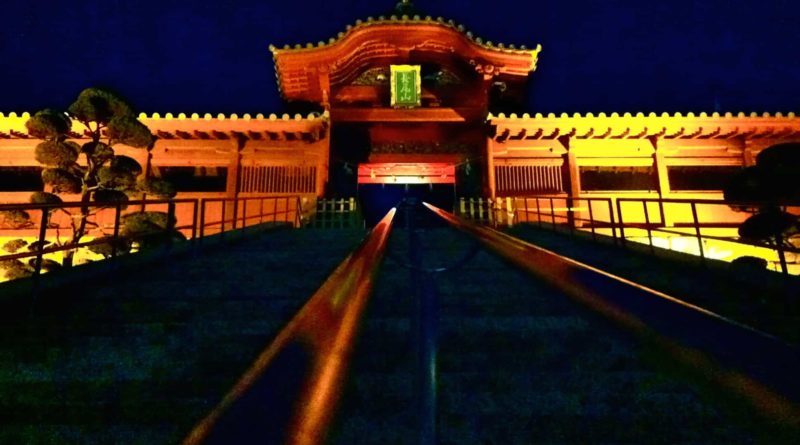Tōshō-gū Shrine
A Tōshō-gū (東照宮) is any Shinto shrine in which Tokugawa Ieyasu, founder of the Tokugawa Shogunate which lasted from 1603-1868, is enshrined. The most famous is the oppulent Nikkō Tōshō-gū in Tochigi Prefecture where Ieyasu is entombed, but Tōshō-gū shrines are found throughout Japan. This one was built by local daimyo Asano Matsuakira, whose mother was one of Ieyasu’s daughters, and completed in 1648.
Its location is significant. The northeast direction was once termed the kimon (鬼門, “demon gate”), and was considered unlucky as it was through here that evil spirits passed. Temples were often built to the north-east of important centers to guard the “demon gate”, such as on Mt. Hiei north-east of Kyoto and on the higher ground in the Ueno district of Edo, also to the north-east of what is now Tokyo. Hiroshima’s Tōshō-gū is located at the base of Futaba-yama which lies to the north-east of Hiroshima Castle, so in building the shrine here, Matsuakira was not only paying respect to his grandfather, but also looking to protect his growing castle town.
Despite being nearly two and a half kilometers from the hypocenter, most of the shrine was destroyed by the a-bomb blast and the current shrine was rebuilt in 1965.
Tōshō-gū is one of Hiroshima’s major shrines and offers the usual Shinto services such as wedding ceremonies and yakubarai exorcisms for people of particularly inauspicious ages (especially the 42nd year for men and 33rd year for women), as well as all kinds of blessings and amulets to get one through the ups and downs of life (the shrine website lists around 20).
It is also one of the more popular places for people to make their hatsumode first shrine visit of the new year. From the moment the clock strikes midnight on New Year’s Eve, for the first few days of the new year, the shrine is thronged with people and there is a great atmosphere.
On Nanakusa-no-sekku every January 7, 300 servings of nanakusa-gayu seven-herb rice porridge are available for ¥150 a bowl from 11am. New Year rituals are completed around January 15 with the Tondo Matsuri at which people gather to watch last year’s lucky shrine goods and new year’s decorations are burnt and roast mochi rice cakes over the flames. In autumn, there are kids kagura dance peformances and lion dances to bring in the autumn festival.
The biggest event in the Hiroshima Tōshō-gū calendar is, undisputedly, the Tōrigosairei (通り御祭礼) which, during the Edo period, was only held every 50 years on the anniversary of Tokugawa Ieyasu’s death. According to records, huge numbers of people would take part in procession in which a 1 ton omikoshi portable shrine would be carried up and down the steep steps and along the surrounding streets. The event fell victim to the flagging fortunes of the Tokugawa Shogunate, but resurrected after 183 years in 1989 on the 350th anniversary of the construction of the shrine (you can see some pictures on this Japanese page here). The festival will be held next in 2015, back on the 50 year schedule.
Some of the annual events at Tōshō-gū
- Cleaning of the jumbo kettle pot January 1
- Hatsumode first shrine visits of the new year January 1-15
- Nanakusa-gayu seven herb rice porridge January 7, 11am
- Tondo Matsuri Nearest Sunday to January 15, 11am (2012 January 15)
- Autumn Festival nearest weekend to October 17
- Kids kagura performances The day before the autumn festival, 1:30pm
- Kirin shishimai lion dance The day before the autumn festival
View Toshogu Shrine [広島東照宮] in a larger map


